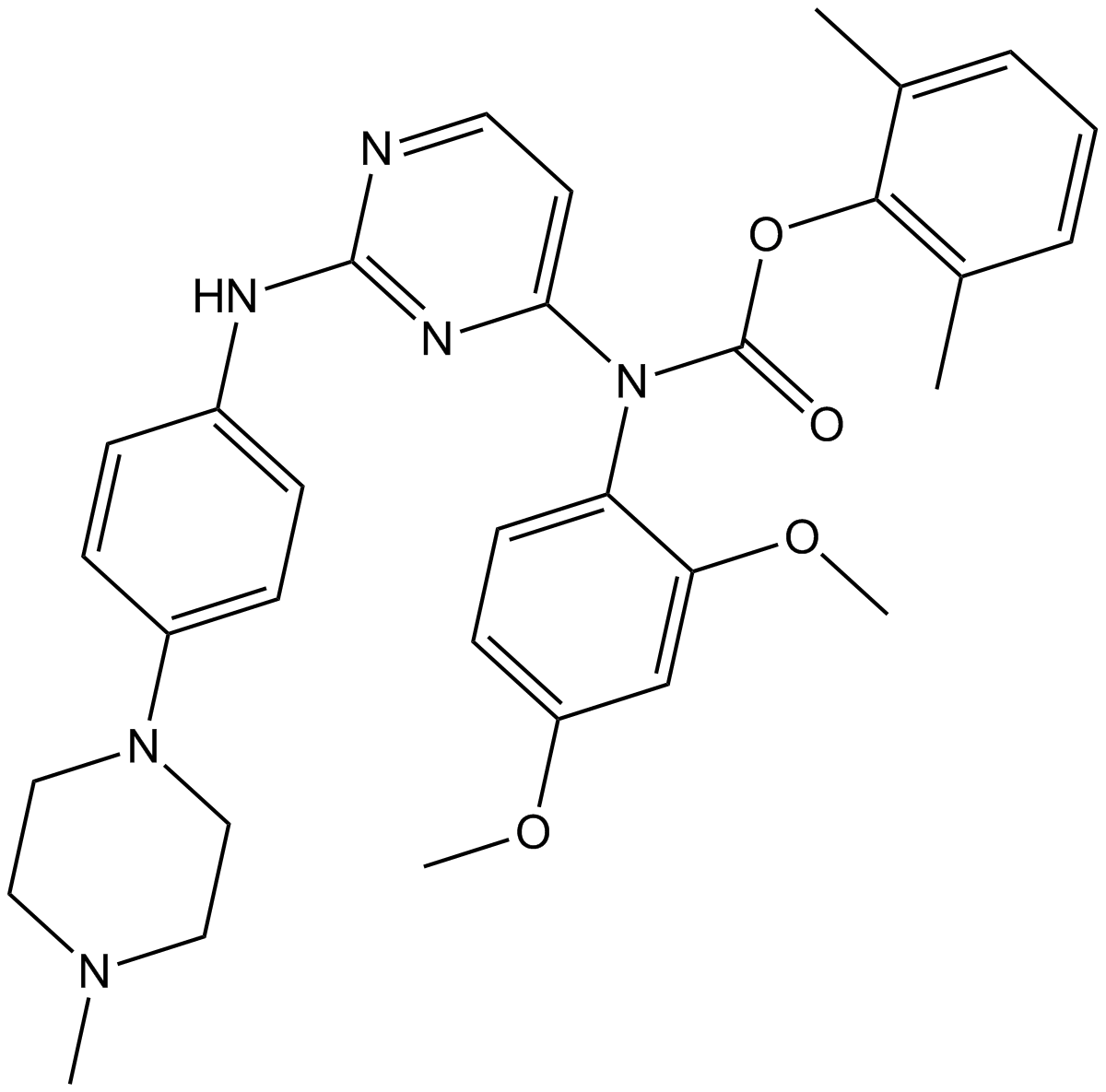WH-4-023 (Synonyms: Dual LCK/SRC inhibitor) |
| رقم الكتالوجGC13600 |
WH-4-023 هو مثبط Lck / Src مزدوج قوي وانتقائي مع IC 50 من 2 نانومتر / 6 نانومتر لـ Lck و Src كيناز على التوالي ؛ القليل من التثبيط على p38α و KDR
Products are for research use only. Not for human use. We do not sell to patients.

Cas No.: 837422-57-8
Sample solution is provided at 25 µL, 10mM.
WH-4-023 is a potent and selective Lck and Src inhibitor with IC50 values of 2 and 6 nM, respectively [1]. It is also an inhibitor of IC50 values of 10, 22 and 60 nM for SIK 1, 2 and 3, respectively [2].
Lck and Src are cytoplasmic tyrosine kinases of the Src family expressed in T cells and NK cells [1]. SIKs restrict the formation of regulatory macrophages and that their inhibition greatly stimulates the production of IL-10 and other anti-inflammatory molecules [2].
WH-4-023 inhibited a number of protein tyrosine kinases that possess a Thr residue at the gatekeeper site, such as FGF and Ephrin receptors, Src family members (Src, Lck, and Yes) and BTK. WH-4-023 also inhibited the SIKs and did not inhibit any other member of the AMPK-related kinase subfamily, which all possess a large hydrophobic residue (Met or Leu) at the gatekeeper site. WH-4-023 inhibited SIK 1, 2 and 3 with IC50 values of 10, 22 and 60 nM, respectively. Also, WH-4-023 increased LPS-stimulated IL-10 production and greatly suppressed proinflammatory cytokine secretion [2].
References:
[1]. Martin MW, Newcomb J, Nunes JJ, et al. Novel 2-aminopyrimidine carbamates as potent and orally active inhibitors of Lck: synthesis, SAR, and in vivo antiinflammatory activity. J Med Chem, 2006, 49(16): 4981-4991.
[2]. Clark K, MacKenzie KF, Petkevicius K, et al. Phosphorylation of CRTC3 by the salt-inducible kinases controls the interconversion of classically activated and regulatory macrophages. Proc Natl Acad Sci U S A, 2012, 109(42): 16986-16991.
Average Rating: 5 (Based on Reviews and 14 reference(s) in Google Scholar.)
GLPBIO products are for RESEARCH USE ONLY. Please make sure your review or question is research based.
Required fields are marked with *




















